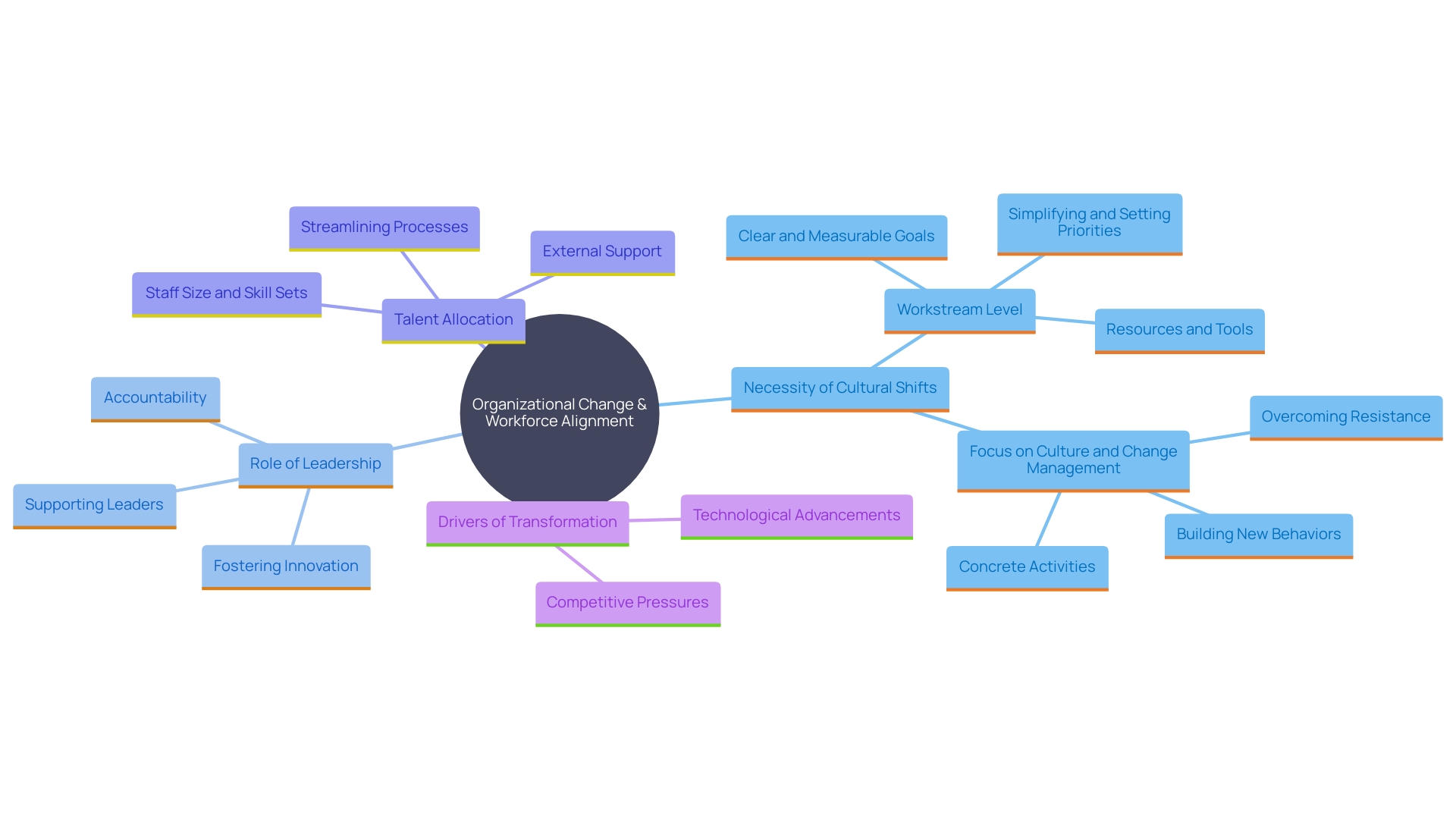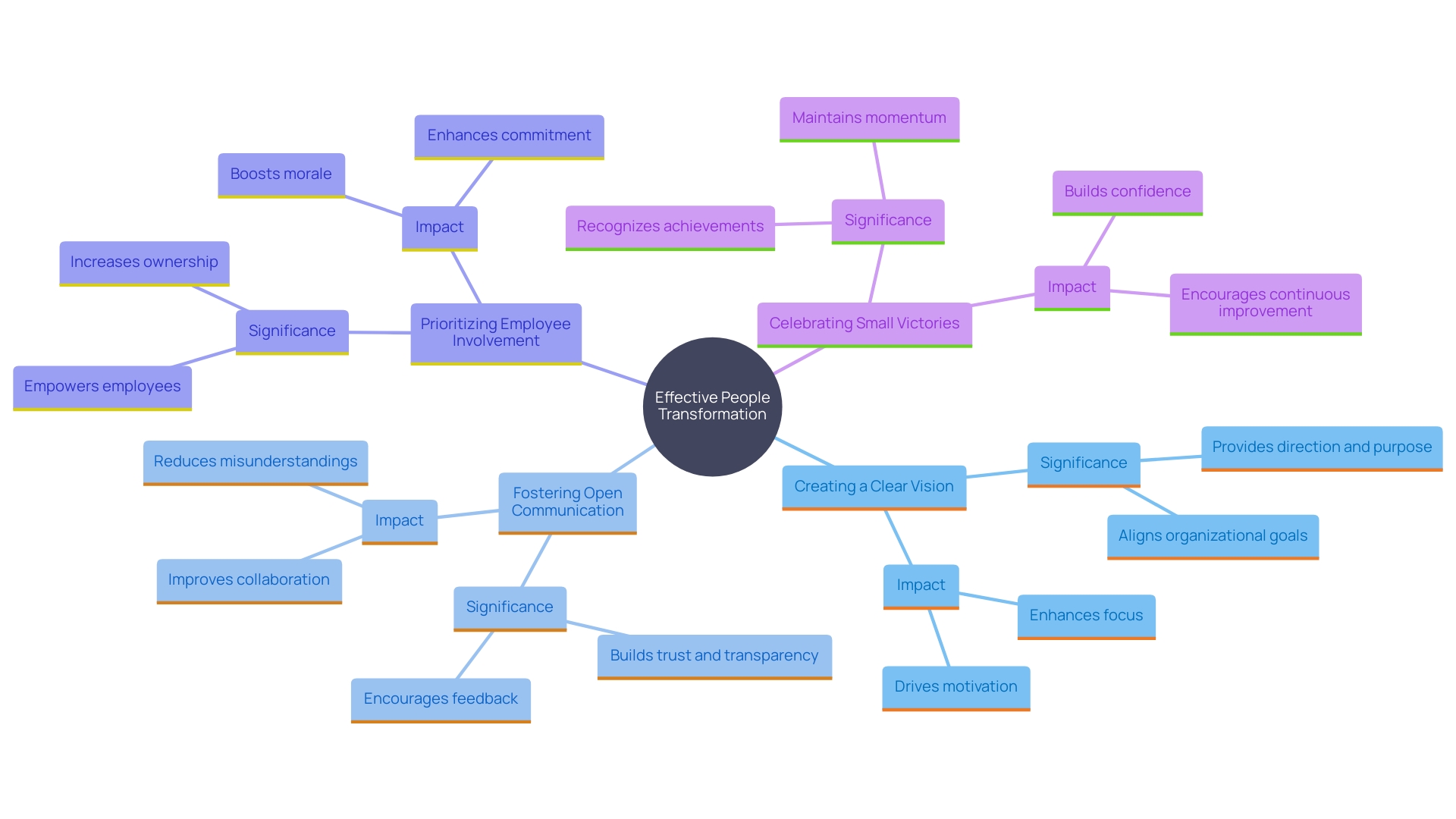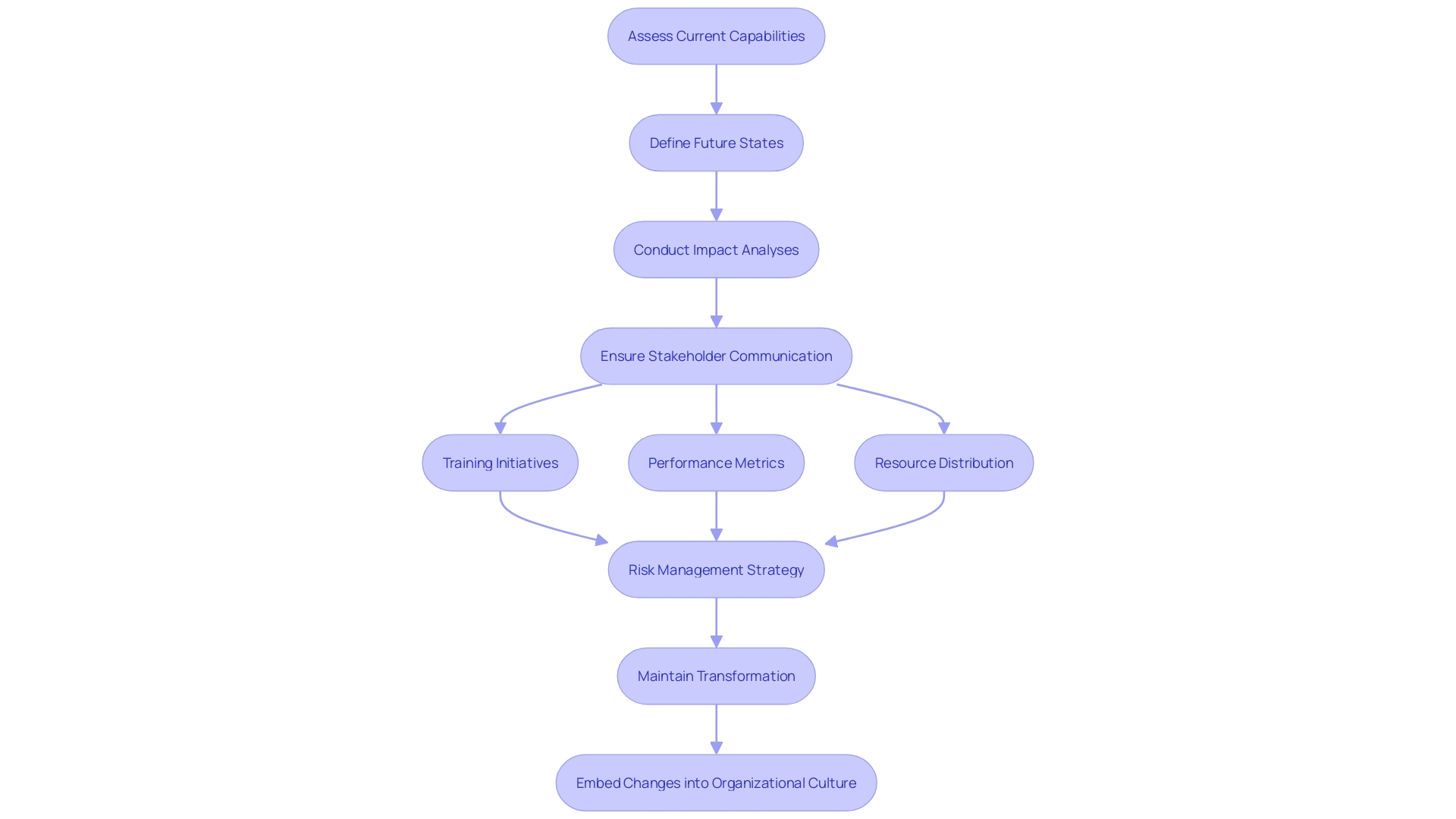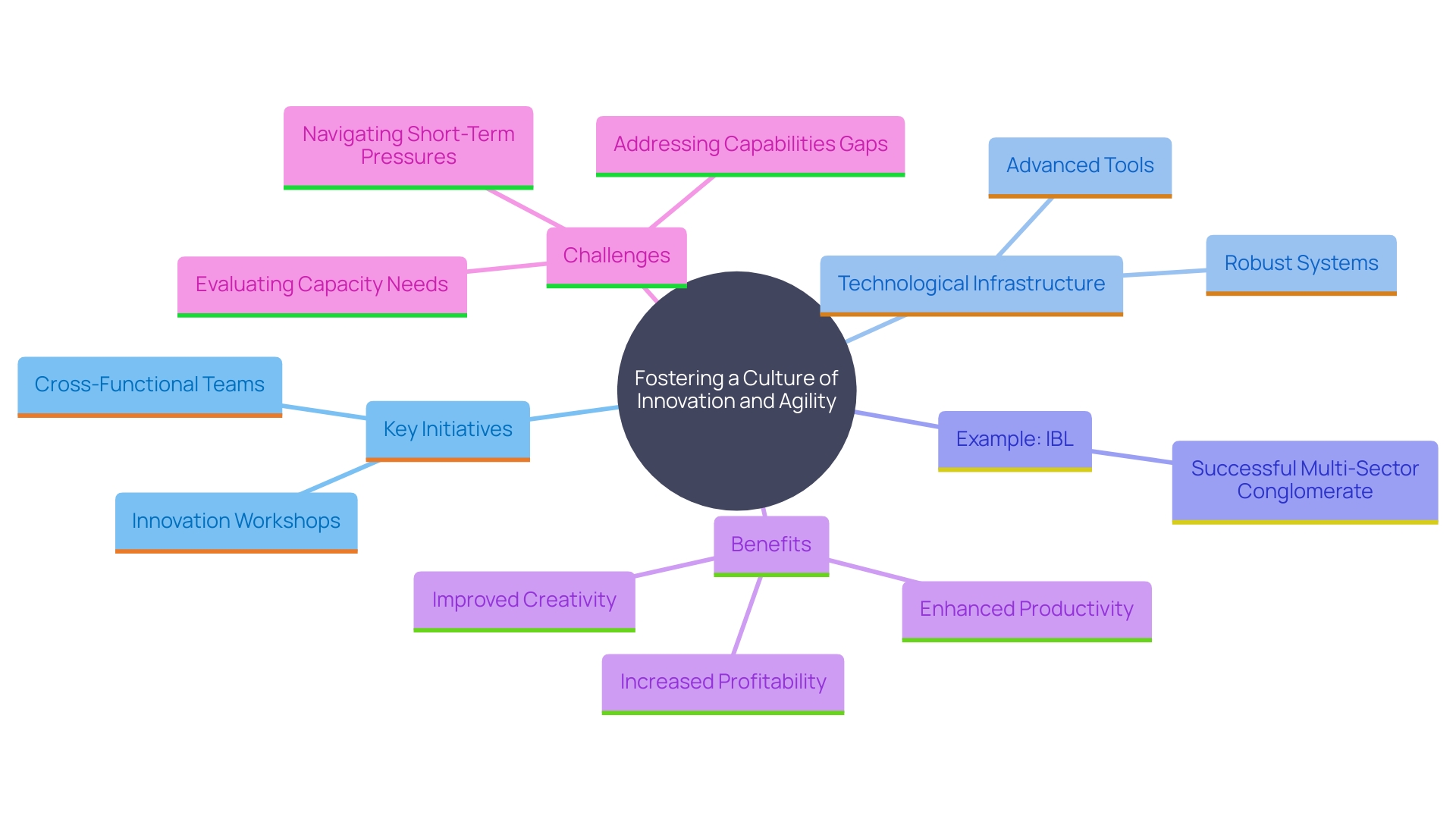Introduction
Navigating the complexities of today's business landscape requires more than just keeping up with technological advancements; it necessitates a fundamental transformation in how organizations approach their workforce. The concept of people transformation is gaining traction as a critical strategy for aligning employees with an organization's strategic objectives. This transformation extends beyond procedural changes, demanding a shift in organizational culture and enhanced employee engagement.
Effective strategies focus on equipping employees with the necessary skills, mindset, and motivation to excel in a rapidly evolving environment. Evidence from competitive sectors, such as life sciences, underscores the importance of fostering a culture of co-creation and innovation, where leaders and employees collaboratively define purpose and strategic goals.
Deploying talent strategically is another cornerstone of successful transformation. Research highlights that channeling top talent into high-value initiatives significantly boosts value retention. For instance, empowering employees at a water supply organization to lead transformation efforts with adequate resources and leadership support has proven effective.
The impetus for transformation is often driven by competitive pressures and technological advancements. Studies indicate that a significant percentage of organizations are compelled to adapt frequently to survive in an ever-changing market.
Leveraging real-time data and AI in change initiatives provides leaders with actionable insights, helping them identify the most impacted areas and optimize investments. This data-driven approach is essential for gauging business readiness and the effectiveness of change programs. Ultimately, fostering a committed core of employees dedicated to the transformation process is vital for long-term success.
Organizations that prioritize building critical skills, executing with precision, and setting comprehensive aspirations are more likely to outperform their peers, creating a culture of continuous improvement and innovation.
Understanding the Need for Transformation
In today's dynamic business environment, companies must navigate a landscape marked by rapid technological advancements and shifting market dynamics. Changing people is crucial for aligning an organization’s workforce with its strategic objectives. This change goes beyond simple alterations in processes and systems, necessitating a fundamental shift in organizational culture and workforce involvement.
Successful methods for changing people emphasize providing workers with the essential abilities, attitude, and drive to succeed in a swiftly evolving atmosphere. Evidence from the competitive life sciences sector shows that fostering a culture of co creation and innovation is vital. Leaders must collaborate with staff to clarify purpose, vision, and strategic impact objectives, thereby creating a basis for change. This approach makes innovation accessible to everyone, engaging individuals at all levels, particularly those nearest to customers, in problem-solving and decision-making.
Moreover, deploying talent where it is needed most is critical. Research indicates that one of the top predictors of successful value retention is the allocation of top talent to high-value initiatives. Organizations must have a clear view of where value is generated and who has the experience and skills to deliver it. For example, at a water supply agency, staff were not only enabled to implement essential adjustments but also offered the tools and guidance to drive the evolution.
The need for transformation is driven by various factors, including competitive pressures and technological advancements. According to research by Bryan Solis, 51% of organizations cite market competition and growth opportunities as reasons for adaptation, while 41% identify competitive pressure. As new business startups constantly emerge, 79.7% of enterprises must adapt every two to five years to survive.
Moreover, the incorporation of real-time information and AI in transformation initiatives can offer leaders essential insights, assisting them in comprehending which sectors of the company are most impacted and which measures will optimize their investments. This data-focused method is crucial for assessing business preparedness, staff engagement, and the efficacy of transformation initiatives.
Ultimately, developing a solid group of individuals who are dedicated to the change is crucial for guaranteeing enduring success. Organizations that focus on building critical skills, executing with rigor, and setting holistic aspirations are more likely to outperform their peers. By elevating a core segment of staff to take responsibility for designing and implementing change, and empowering a broader group of influencers and managers, leaders can foster a culture of continuous improvement and innovation.

Key Principles of Successful Transformation
Effective people transformation relies on several crucial principles. Initially, creating a distinct and persuasive vision is crucial, one that connects with staff at all tiers and aligns with the company's objectives. This vision should be well-communicated and understood throughout the company. Studies have demonstrated that organizations ranking in the highest quartile for engagement practices have 2.6 times greater ownership of initiatives compared to those in the lowest quartile.
'Second, fostering open communication and a questioning culture throughout the change process builds trust and transparency.'. As noted in 'Leading with Questions: How Leaders Find the Right Solutions by Knowing What to Ask,' a culture that encourages questions helps individuals become more self-aware and confident in their roles. This culture ensures that staff feel comfortable expressing their thoughts and concerns, which is vital for successful transformation.
Third, prioritizing staff involvement is critical. Supportive responses and involvement foster a feeling of ownership and empowerment among staff. For instance, at a water supply agency, leadership changes enabled staff to guide the change by offering essential resources and assistance. Deploying talent where it is needed most ensures that the best-qualified individuals are in roles where they can make the most impact, fostering a strong core of staff dedicated to the organization's success.
Lastly, acknowledging and celebrating small victories during the change journey can significantly boost morale and reinforce commitment to the overarching goals. This approach not only maintains momentum but also encourages continuous improvement and dedication. For instance, a logistics company used a dashboard to monitor workflows and allocate talent efficiently, which assisted in making data-backed decisions and keeping staff engaged.
In summary, successful individuals' change requires a clear vision, open communication, employee involvement, and the celebration of small victories. By concentrating on these principles, organizations can create a dedicated and involved workforce prepared to promote transformation and attain long-term success.

Building a Comprehensive Change Management Strategy
A strong transformation management strategy is essential for guiding people transformation initiatives effectively. This strategy should incorporate a structured approach to implement transformation, starting with assessing current organizational capabilities and defining desired future states. An essential part of this process is conducting an impact analysis to foresee potential challenges or disruptions. Stakeholder communication is essential, ensuring all parties, from employees to suppliers, comprehend why the modification is occurring, how it will be carried out, and the anticipated results. Effective communication can alleviate concerns and reduce resistance.
Essential elements of an effective transformation management strategy comprise training and development initiatives, performance metrics to assess progress, and regular check-ins to modify strategies as needed. Furthermore, it's essential to distribute resources effectively, ensuring adequate financial, human, and technological assistance for the transformation. Conducting a workload impact analysis helps determine if there’s a need for hiring, training, or redistributing tasks among current staff.
Developing a risk management strategy is also critical. This entails recognizing possible operational, financial, and HR risks linked to the modification and assessing how these risks could influence different elements of the entity, including staff morale, customer contentment, and financial stability. By proactively managing these elements, organizations can facilitate a smoother transition and ensure alignment with their overall objectives.
Maintaining transformation is another vital aspect. It guarantees that significant modifications are embraced, become the established method of operation, and are embedded into the organizational culture. Efficient support initiatives offer a reliable base for upcoming enhancements and innovations, enabling the entity to expand on the progress rather than revert. Studies consistently indicate that projects with outstanding transition management are up to seven times more likely to achieve or surpass goals compared to those with ineffective transition management. Therefore, embedding change into the fabric of the organization is essential for realizing the full benefits of the investment made in the change initiative.

Fostering a Culture of Innovation and Agility
In today’s fast-paced business environment, fostering a culture of innovation and agility is crucial for people transformation. Organizations must encourage staff to think creatively, experiment with new ideas, and embrace adaptive practices. This can be achieved through initiatives such as innovation workshops, cross-functional teams, and continuous learning opportunities. A culture that values innovation empowers employees to take initiative and respond effectively to change, ultimately driving organizational success.
High-performing agile companies demonstrate the effectiveness of a robust technological infrastructure, with 79% having high technology scores, which provides real-time transparency into activities and resource allocation. They also measure performance differently, focusing on metrics that are customer-oriented and aligned with organizational objectives.
A case in point is IBL, a multi-sector conglomerate in Mauritius, which has leveraged its entrepreneurial culture to drive innovation across its diverse portfolio of over 300 companies. Their pioneering spirit and commitment to innovation have enabled them to thrive in various sectors, from logistics to energy.
As Peter Cohan, founder of Peter S. Cohan & Associates, aptly puts it, “Innovation means identifying problems that cause humans to hurt and relieving the pain by creating and delivering solutions.” This mindset, coupled with the right motivation, process, and training, allows ordinary people to innovate and contribute significantly to their workplaces.
In conclusion, organizations that invest in technology, reframe their performance metrics, and cultivate a culture of innovation and agility are better positioned to achieve sustained success in today’s dynamic business landscape.

Conclusion
Transforming the workforce is not merely an operational necessity; it is a strategic imperative that drives organizational success in a rapidly evolving business environment. The fundamental principles of people transformation emphasize the importance of aligning workforce capabilities with strategic objectives. By fostering a culture of co-creation and innovation, organizations can empower employees at all levels to contribute meaningfully to the transformation process.
Effective deployment of talent, coupled with a clear vision and open communication, creates a committed workforce ready to embrace change. The integration of real-time data and AI into change initiatives not only enhances decision-making but also ensures that organizations can respond swiftly to market dynamics. Recognizing and celebrating small wins during the transformation journey reinforces employee engagement and commitment, driving continuous improvement.
A comprehensive change management strategy is crucial for navigating the complexities of transformation. This strategy should encompass stakeholder communication, risk management, and resource allocation to facilitate a smooth transition. By embedding change into the organizational culture, companies can sustain improvements and build a foundation for future innovations.
Ultimately, organizations that prioritize people transformation, foster a culture of innovation and agility, and implement robust change management strategies are better equipped to excel in today’s competitive landscape. This proactive approach not only enhances employee engagement but also positions organizations for long-term success and resilience.




